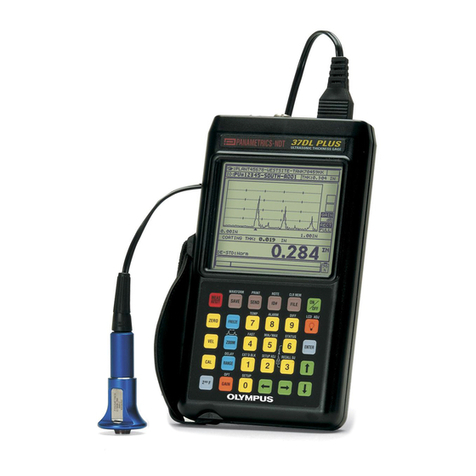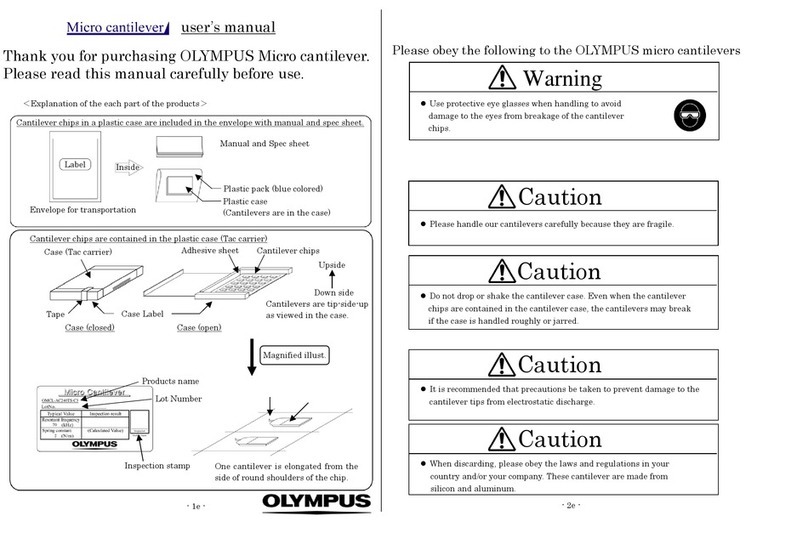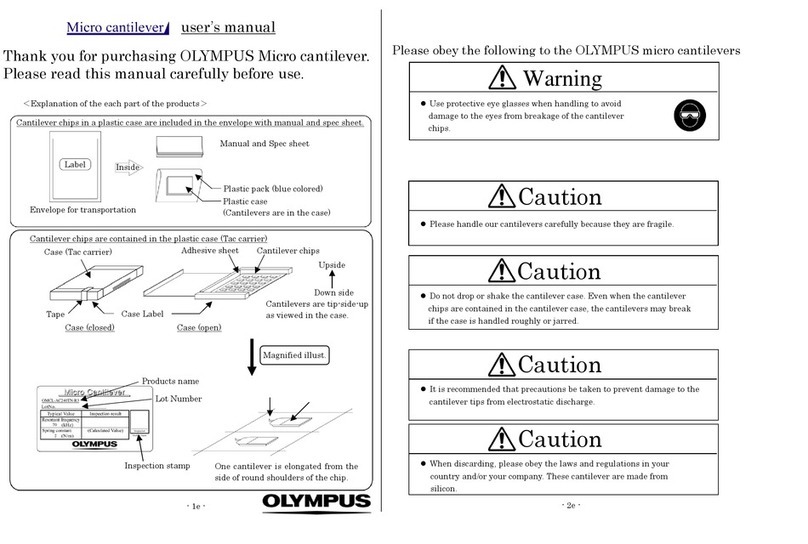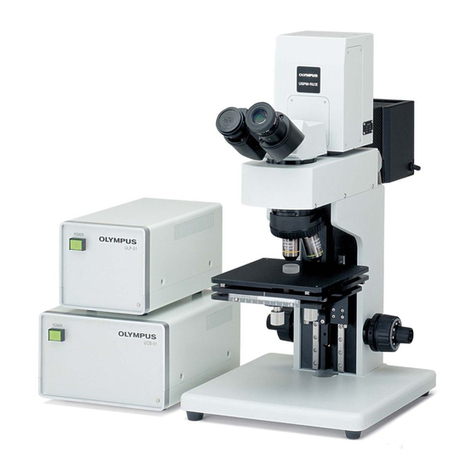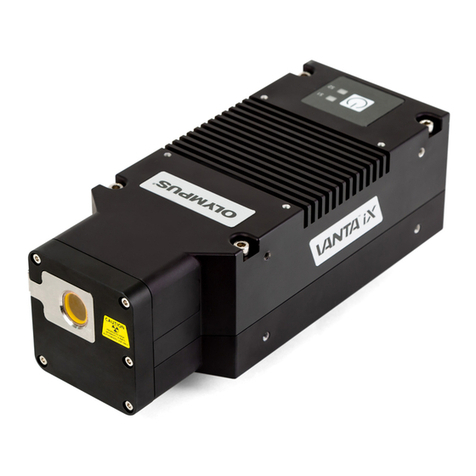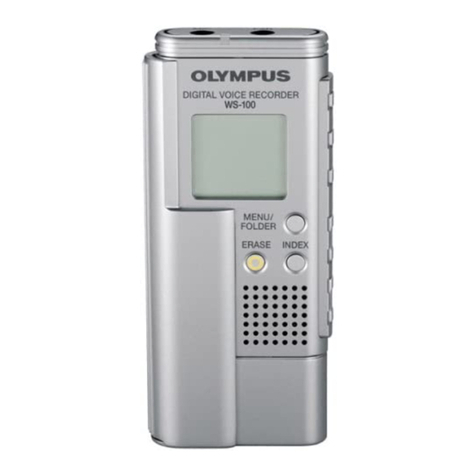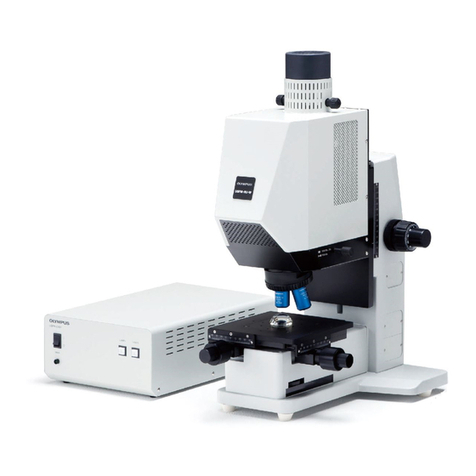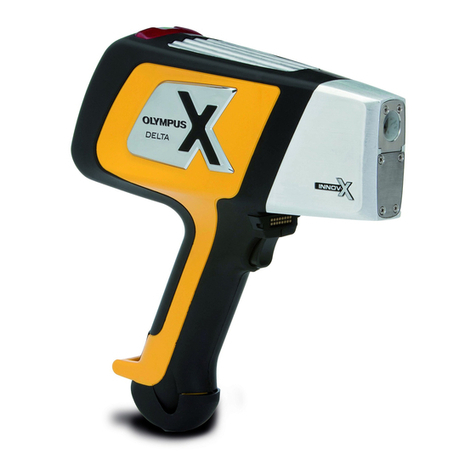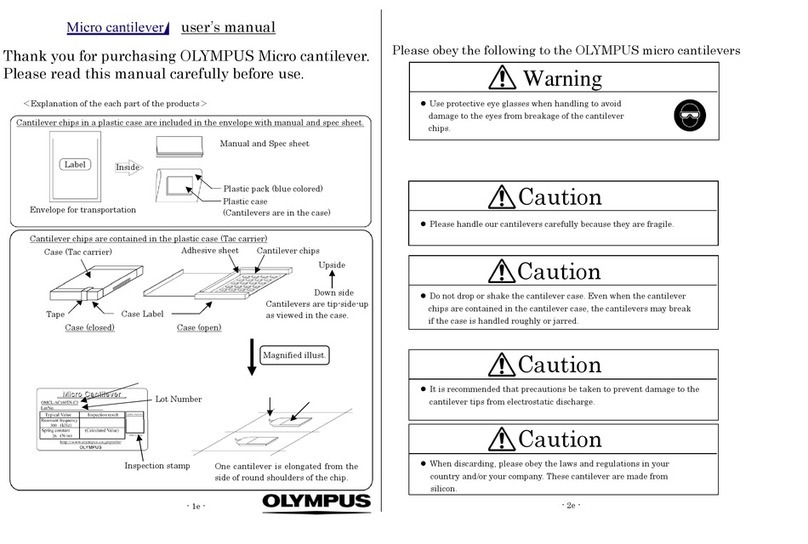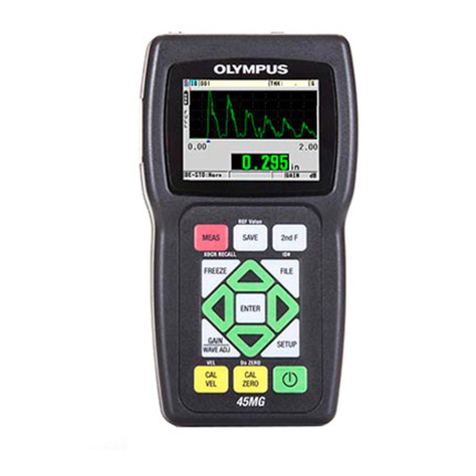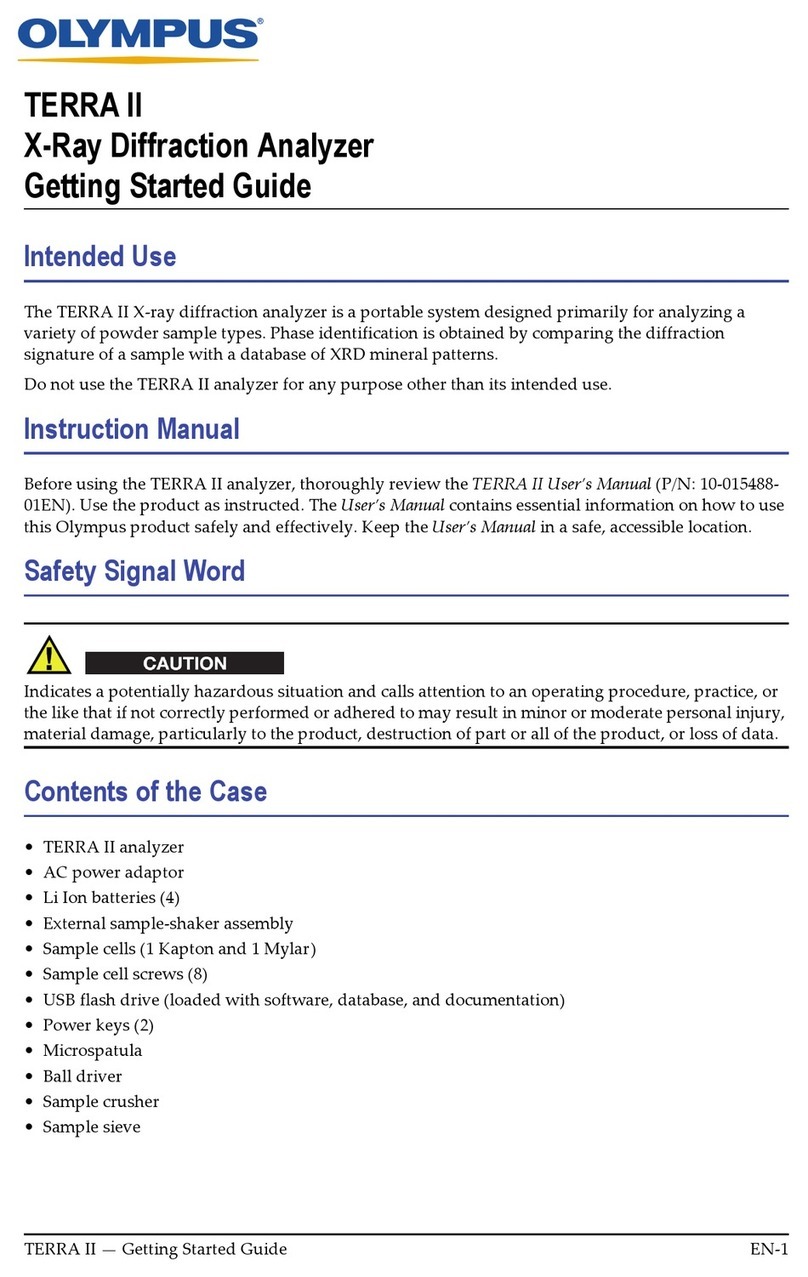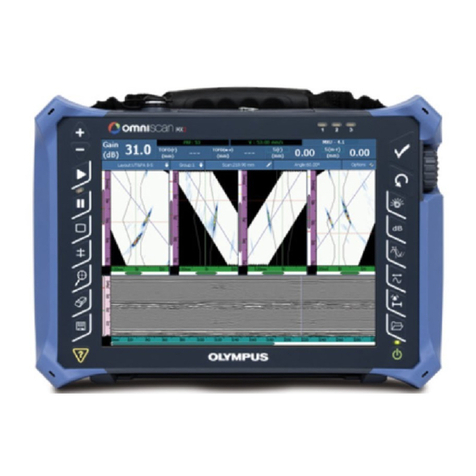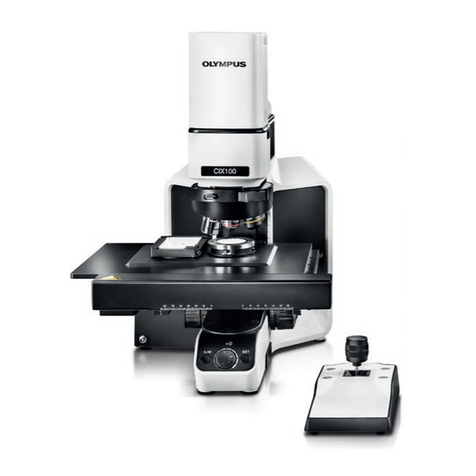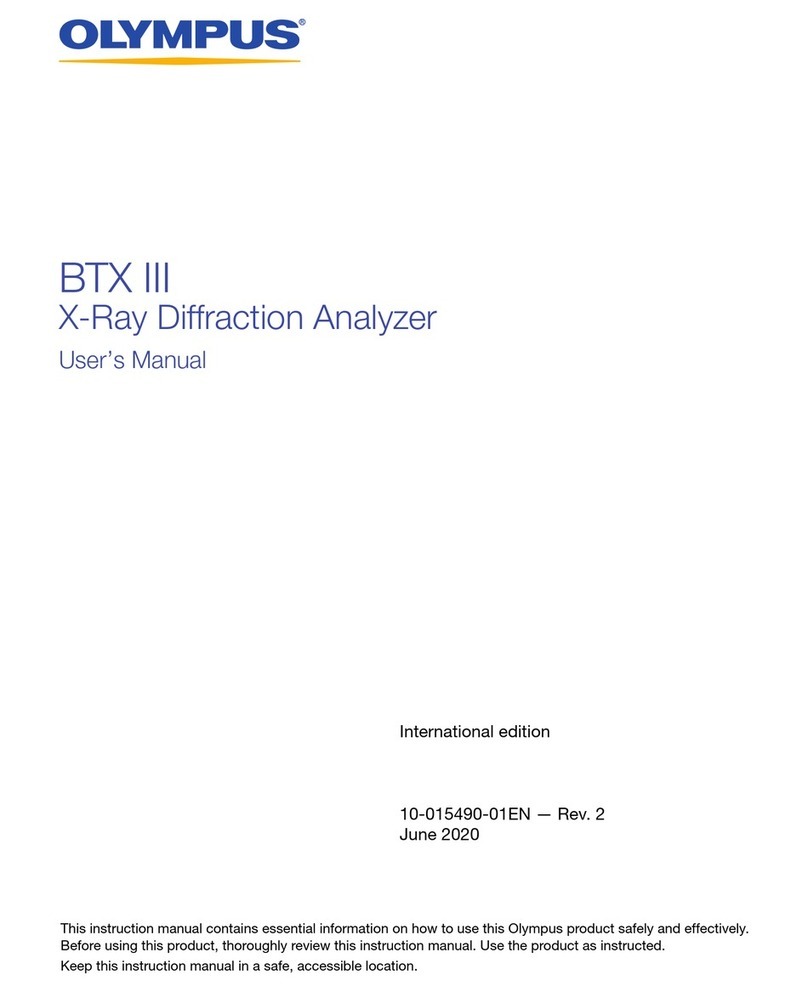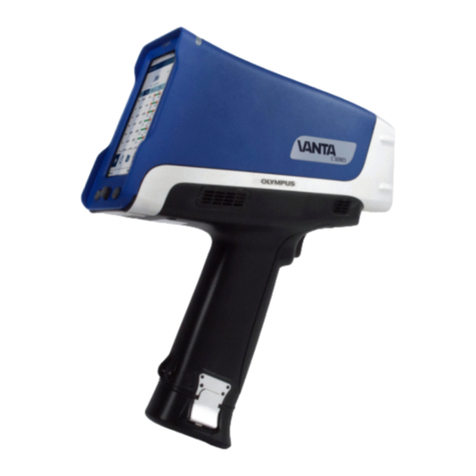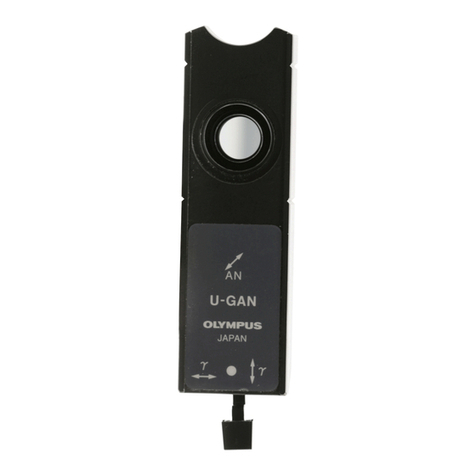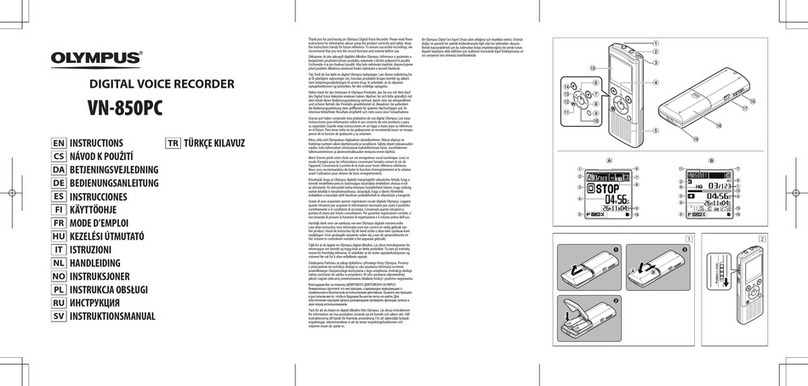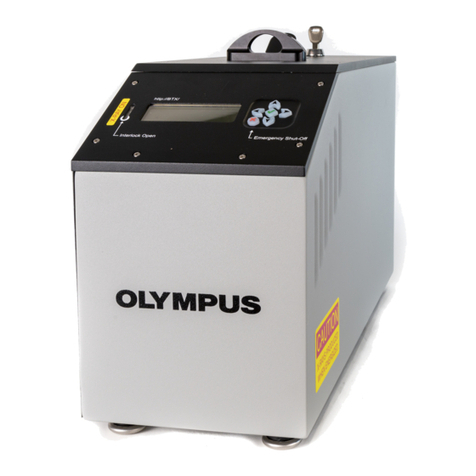
4
·This product is a precision instrument. Handle it with care and avoid subjecting it to a sudden or severe
impact.
·Never disassemble any part of the product. Otherwise, failure could be caused.
·Do not use the system in areas where it may be subjected to direct sunlight, high temperature and/or
humidity, dust or vibrations.
(For the operating environmental condition such as temperature and/or humidity, see “1
SPECIFICATIONS” (page 5).
Avoid using the instrument in the following places.
(1) Near an inlet or exhaust outlet of air conditioning equipment, etc.
(2) In a place subjected to large vibrations or change in temperature.
(3) Near equipment producing abnormal noise (including non-Olympus equipment)
(4) In a place subjected to direct sunlight.
(5) In a place subjected to excessive dirt or high temperature and humidity.
(6) Near flammable substance (gasoline, lacquer thinner, alcohol, etc.)
1. When the AF (autofocusing) unit is installed, it may affect the observations as described below.
· When the AF unit is combined with the MM6C-KMAS or MM6C-RLAS, the periphery of the observation field of
view may become dark. If this bothers you, replace the cross-frame part of the eyepiece with that provided with
the AF unit. Refer to the instruction manual for the measuring microscope STM7 for the replacement method.
· The color unevenness is noticed in the DIC (Differential Interference Contrast) observation performance if this
AF unit is not used together.
1. The objectives compatible with autofocusing are the 10X to 100X objectives in the LMPLFLN/LMPlanFl or LMPLFLN-
BD/LMPlanFl-BD series. However, the autofocusing with 10x will not be repeated. Do not use it for measurement
purpose.
2. When measuring a height, use an objective with 20X or higher power.
3. Autofocusing is possible on specimens with reflectance of 3% (glass) to 100% (mirror). With the following types of
specimens, however, the intended focusing position may differ from the Autofocusig position or the autofocusing
may not be possible.
· Specimens with very irregular surface (surface of a plastic mold, etc.)
· Thin, transparent structures (back surface reflections from a thin glass plate, etc.)
4. When performing a darkfield observation for a specimen with high reflectance, if you use the objective with low
magnification particularly, a red spot may be observed near the center of field. (As this is not a laser beam, there is
no safety problem.)
5. Depending on the specimen pattern, the autofocusing may take some time or may be entirely impossible.
6. To prevent collision between the objective and specimen, be sure to set the lower software limit. (For the setting
procedure, refer to the instruction manual for the measuring microscope STM7.)
7. For the DIC (Differential Interference Contrast) observation, insert the analyzer U-AN360-3 in the analyzer slot.
8. When autofocusing is executed during DIC observation, the intended autofocusing performance may not be
obtained with the adjustment areas (where the interference color is near orange) of certain DIC prisms.
9. There is a gap by 1.1 mm at maximum on the view field between the center position of the cross line of the
eyepiece attached with the focusing plate and the position to which AF is applied.
10. The aberration correction position varies depending on combinations of the AF unit or objective lenses.
11. After the AF unit is assembled, attach the seal for aberration correction which shows the aberration correction
position to the AF unit. (For details, refer to “Instruction manual of Measuring Microscope STM7”.
Handling precautions
Caution on Autofocusing
1. Do not use organic solvents, which cause painted and plastic parts to deteriorate. Do not use organic solvents
to clean device components other than the glass components. To clean them, use a lint-free, soft cloth slightly
moistened with a diluted neutral detergent.
2. Before disposing of this product, be sure to follow the regulations and rules of your local government.
Maintenance and storage
